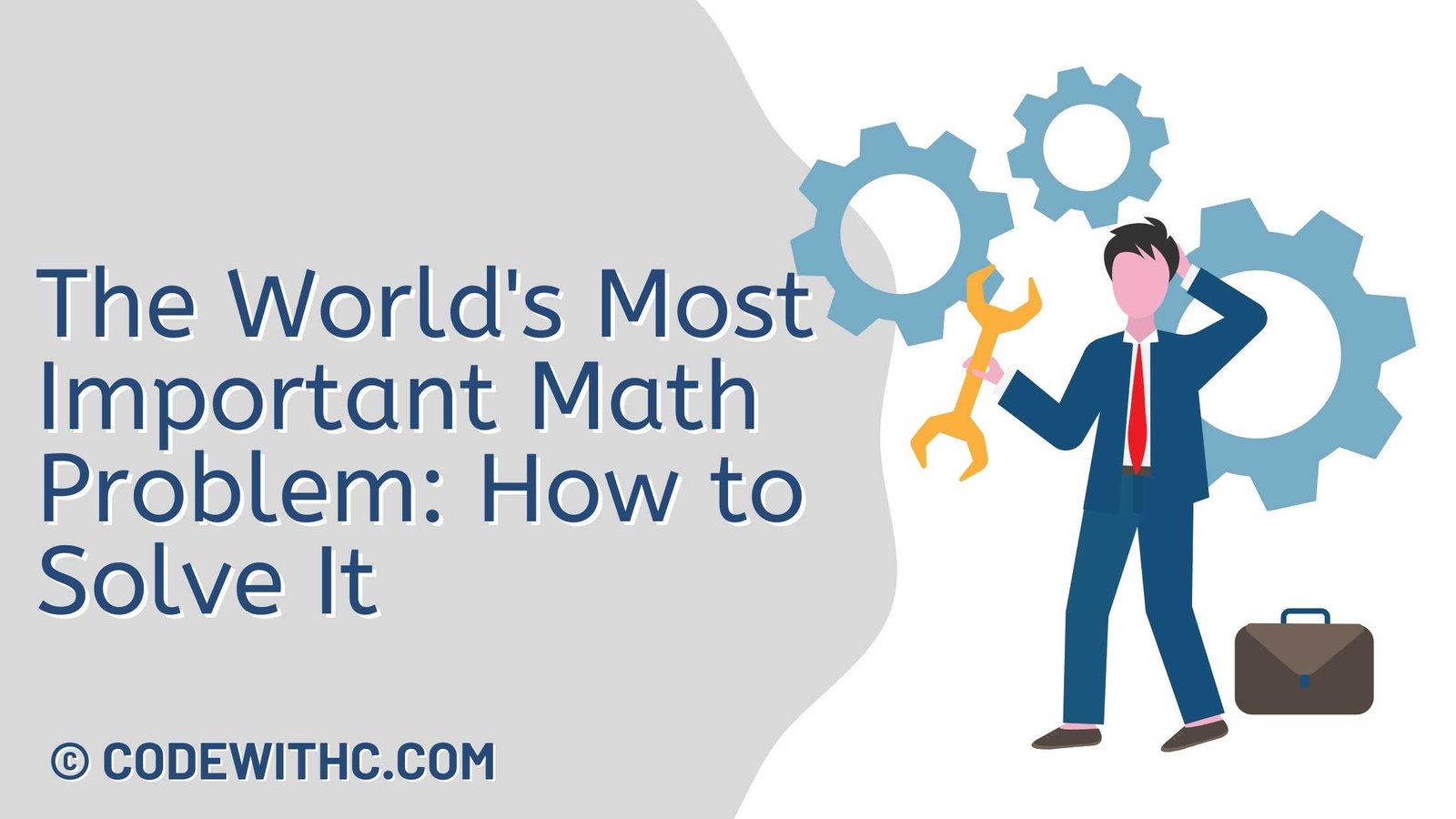Why is it important?
In the early 1990s, a team of scientists at MIT announced the solution to the problem known as the Millennium Prize. They set up a website that explained the problem and invited the world to compete. The contest attracted entries from many different countries and universities. The prize, worth $1 million, went to the team from Japan. But the Japanese team did not actually solve the problem—they only used a computer program that had been developed by a student at the University of California at Berkeley, who had worked on the problem for several years.
What is this problem?
The Millennium Prize is an example of a famous mathematical problem called the Collatz Conjecture. It was posed by a German mathematician named Lothar Collatz in the 1930s. The conjecture states that, for any positive integer x, the following recursive formula holds:
x = 2x + 1
If we start with a given positive integer, say x=10, we get the following sequence of numbers:
10 = 2 · 10 + 1 = 20 = 4 · 10 + 2 = 42 = 6 · 10 + 4 = 82 = 8 · 10 + 2 = 100 = 10 · 10 + 0 = 1000
What’s going on here?
The Collatz Conjecture is based on the idea that every positive number can be expressed as a unique product of powers of two and one. For example, the number 11, which is written as 11 = 101, is the product of two ones and one one:
11 = 101 = 2 · 10 + 1
For the first ten values of x, the first ten terms in the sequence above are:
10 = 2 · 10 + 1 = 20 = 4 · 10 + 2 = 42 = 6 · 10 + 4 = 82 = 8 · 10 + 2 = 100 = 10 · 10 + 0 = 1000
But when we reach the end of the sequence, the value of x changes, so we end up with an extra one in the final term. This is the crucial part of the conjecture: The last term in the sequence is always one more than the product of the previous two terms.
Why does the conjecture matter?
The Collatz Conjecture is the simplest, most general version of a much broader class of problems. Every positive integer x can be represented as the product of powers of 2 and 1, but the order in which the factors are multiplied doesn’t matter. For example, the number 17 can be written as the product of three twos and two ones:
17 = 12 · 52 + 2 · 11 = 101 = 102 · 22 + 1
There are other ways to represent x, and it turns out that the Collatz Conjecture is the only one that satisfies a property called the Collatz Conjecture. In other words, the conjecture says that, if we take any other expression of x as the product of powers of 2 and 1, then the first term in the resulting sequence must have a factor of one more than the previous one. If we write x = y2z, where y, z are positive integers, the conjecture becomes:
y2z = 2yz + 1
That is, the last term in the sequence must be one more than the product of the previous two terms.
Why do we care about the Collatz Conjecture?
The Collatz Conjecture has a wide range of applications. For example, it’s the basis for the world-famous Collatz conjecture, which was invented by the mathematician Lothar Collatz in 1936. The conjecture states that, for any positive integer x, the following recursive formula holds:
x = 2x + 1
If we start with a given positive integer, say x=10, we get the following sequence of numbers:
10 = 2 · 10 + 1 = 20 = 4 · 10 + 2 = 42 = 6 · 10 + 4 = 82 = 8 · 10 + 2 = 100 = 10 · 10 + 0 = 1000
In other words, if we let y=2x and z=x, then the Collatz Conjecture is equivalent to the statement that:
y2z = 2yz + 1
When we apply this to the Collatz Conjecture, we get:
2x = 2x + 1
This means that if we start with the number x, then the next number we get is two times the current one plus one:
2x = (2x) + 1
For example, if we start with x=10, we get:
10 = (2 · 10) + 1
= 20 = (4 · 10) + 2
= 42 = (6 · 10) + 4
= 82 = (8 · 10) + 2
= 100 = (10 · 10) + 0
And the last term is 100, not 101 as we might have expected.
